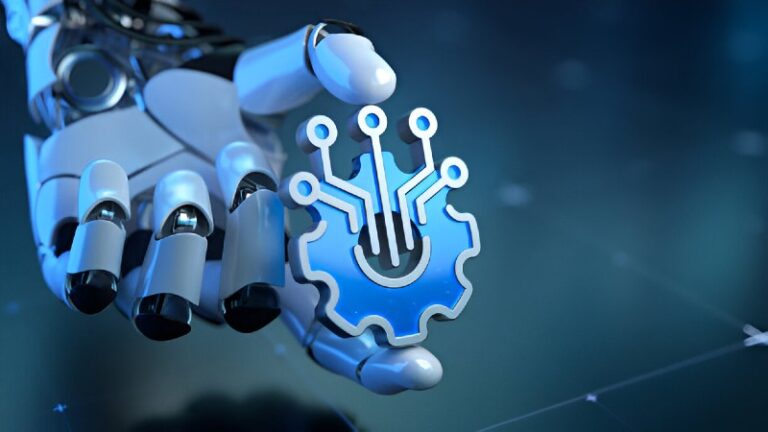The future is now. Robotics, once largely confined to the rigid confines of industrial automation, are rapidly stepping into our daily lives, transforming how we live, work, and interact. This isn’t just about factory floors anymore; it’s about intelligent machines becoming integral parts of our homes, hospitals, and communities, offering practical applications that enhance human experiences. The integration of advanced AI is unlocking new frontiers, allowing robots to move beyond simple, repetitive tasks to exhibit a remarkable degree of adaptability and understanding.
Robotics in Everyday Life
The perception of robots is shifting from clunky, caged machines to sophisticated, helpful companions. This expansion of robotics in everyday life is driven by significant advancements in artificial intelligence (AI), sensor technology, and mechanical design. These intelligent systems are now capable of interpreting complex instructions, navigating unpredictable environments, and even learning from human interactions, paving the way for a truly integrated future.
Cognitive Mapping and Human-Like Understanding
Traditionally, robots relied on pre-programmed maps and explicit geometric reconstructions. However, breakthroughs like Neural Radiance Fields (NeRF) are revolutionizing robotic perception. NeRF allows robots to generate real-time, photorealistic 3D models from 2D image inputs, providing a continuous and highly efficient representation of their surroundings. This empowers robots to:
- Reconstruct dynamic scenes with high fidelity: Imagine a home robot that can not only map your living room but also understand when a chair has been moved or a new object introduced, adapting its navigation instantly.
- Enhance localization and navigation: By integrating NeRF with Simultaneous Localization and Mapping (SLAM) systems, robots can pinpoint their exact location and build a detailed map concurrently, even in complex and changing environments.
- Facilitate nuanced manipulation: Improved depth perception and object pose estimation mean robots can grasp objects with greater precision, even if partially obscured or oddly stacked, crucial for tasks like retrieving items from a cluttered pantry.
This advancement is a game-changer, moving robots beyond rigid movements to an intuitive understanding of their physical world, mirroring human spatial awareness.
Key Innovations in Robotics
The remarkable progress in robotics in everyday life is fueled by several critical innovations:
- Robot Foundational Models: Unlike traditional deep learning models trained on small, task-specific datasets, new foundational models are broad and adaptable. Vision-Language Models (VLMs) enable robots to integrate vision, language, and action, allowing them to understand commands and execute tasks as text tokens. This means a single system can learn a vast array of behaviors from visual or language prompts, significantly reducing the need for explicit programming.
- Cross-Domain Transfer Learning: The gap between virtual training and real-world deployment is narrowing with techniques like sim-to-real and human-to-bot. Robots are now trained in highly realistic digital environments, often as part of coordinated fleets, before real-world deployment. Furthermore, large-scale human motion capture datasets are being used to imbue robots with biomechanical realism, allowing them to learn and mimic fluid human movements for tasks like assisting a wheelchair user or performing intricate assembly.
- Advanced Multi-Sensing and Actuation: While vision remains paramount, the future of robust robotics lies in multi-sensor integration. Combining proximity, tactile, torque, motion, and temperature sensors with vision systems significantly enhances a robot’s ability to operate in complex environments. For instance, a domestic robot with tactile sensors can safely handle delicate objects, while proximity sensors ensure it avoids collisions with children or pets. Advanced Degrees of Freedom (DoF) control architectures and proprioceptive state encoding contribute to fluid, natural motion and refined accuracy in manipulation.
Applications of Robotics in Our Daily Lives
The impact of these innovations is manifesting across diverse sectors:
| Application Area | Examples of Robotics in Everyday Life | Impact on Users |
| Home Assistance | Robotic vacuum cleaners, smart lawn mowers, kitchen assistants, home security robots | Reduces manual chores, enhances convenience, improves home safety. |
| Personal Companionship | Social robots for elderly care, educational robots for children, robotic pets | Provides emotional support, aids learning, offers companionship without typical pet responsibilities. |
| Healthcare Support | Surgical robots, rehabilitation robots, medication delivery robots, telepresence robots | Increases precision in surgeries, accelerates recovery, enhances patient care in remote areas. |
| Service & Hospitality | Delivery robots, concierge robots in hotels, automated restaurant staff | Improves efficiency, reduces wait times, offers personalized service. |
| Logistics & Delivery | Autonomous delivery vehicles (last-mile), warehouse inventory management robots | Speeds up delivery, optimizes stock management, enhances efficiency of supply chains. |
Conclusion
While the advancements in robotics in everyday life are undeniable, challenges remain. The compute bottleneck poses a significant hurdle, as sophisticated AI models demand immense computational resources for real-time inference and training. Data scarcity for real-world robotic learning is also a concern, though techniques like data-free Reinforcement Learning are emerging.
Despite these obstacles, the trajectory is clear. Startups, research institutions, and industry leaders are actively addressing these issues, exploring optimized AI efficiency, model compression, and innovative training methodologies. The future promises a seamless integration of intelligent machines into our daily existence, where robots are not just tools but adaptive, intelligent systems that enhance our quality of life and redefine convenience.
Frequently Asked Questions (FAQs)
What is the primary difference between industrial and everyday robotics?
Industrial robotics traditionally focuses on repetitive tasks in controlled factory environments, while everyday robotics integrates intelligent machines into unpredictable human environments like homes and hospitals.
How do new cognitive mapping technologies enhance robots?
Technologies like Neural Radiance Fields (NeRF) allow robots to create real-time, photorealistic 3D models of their surroundings, significantly improving their spatial awareness, navigation, and ability to interact with dynamic environments.
What are Robot Foundational Models?
These are advanced AI models that integrate vision, language, and action, enabling robots to understand complex commands and perform diverse tasks without extensive, task-specific programming.
How does cross-domain transfer learning benefit robotics development?
It allows robots to learn skills in virtual simulations or by observing human demonstrations, then seamlessly apply that knowledge to real-world scenarios, accelerating development and adaptability.
Why is multi-sensing important for robots in daily life?
Integrating various sensors (e.g., tactile, proximity, torque) with vision enhances a robot’s ability to operate safely and effectively in complex, dynamic environments by compensating for individual sensor limitations.
What are some practical applications of robotics in homes?
Practical applications include robotic vacuum cleaners, smart lawn mowers, kitchen assistants, security robots, and even personal companion robots for elderly care and emotional support.
What challenges must be overcome for widespread robotics adoption?
Key challenges include addressing the compute bottleneck for complex AI models and overcoming data scarcity for real-world robotic learning, though innovative solutions are emerging.
Will robots replace human jobs in everyday life?
While robots may automate certain repetitive tasks, they are more likely to create new opportunities in areas such as robot maintenance, programming, and specialized service roles, enhancing human productivity.


